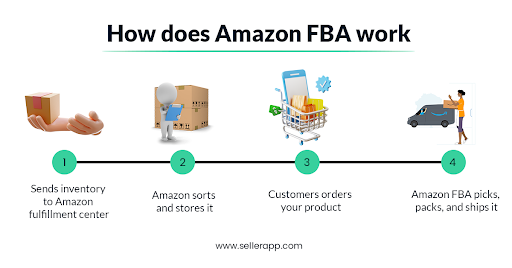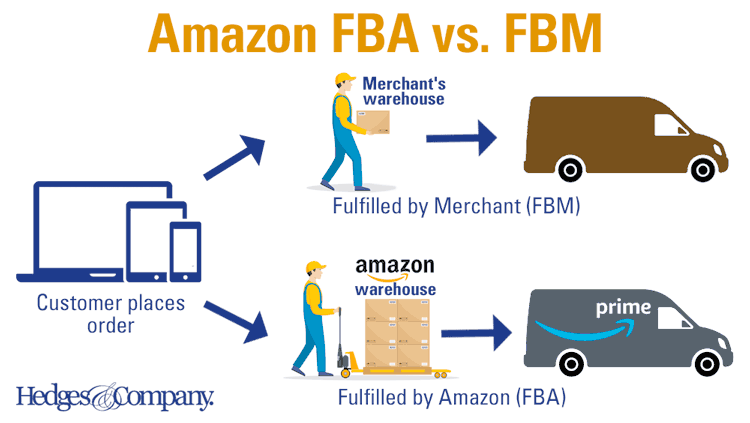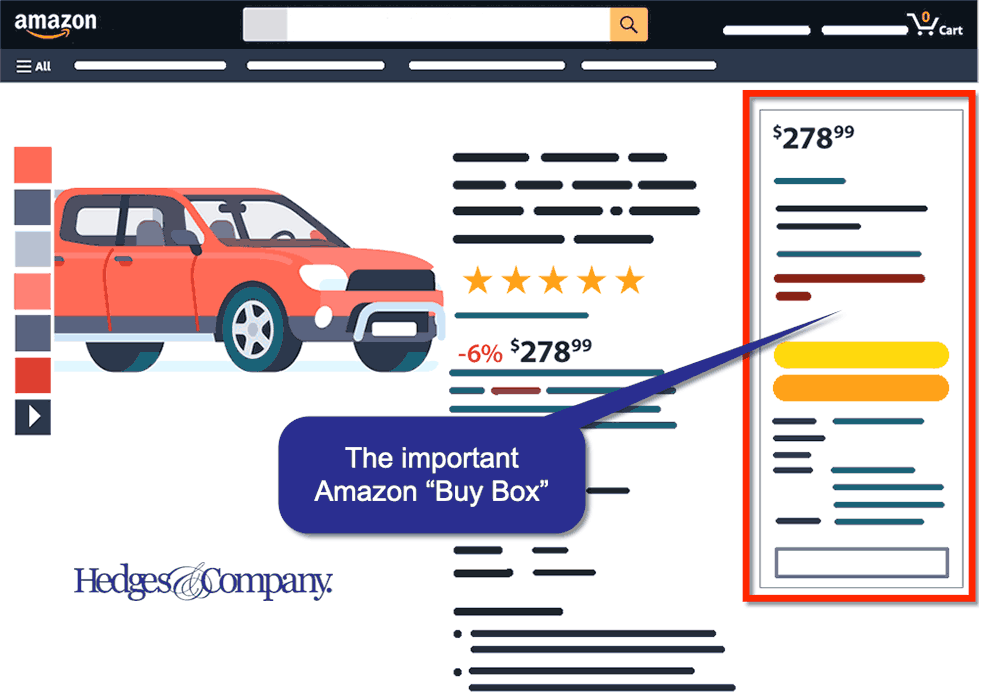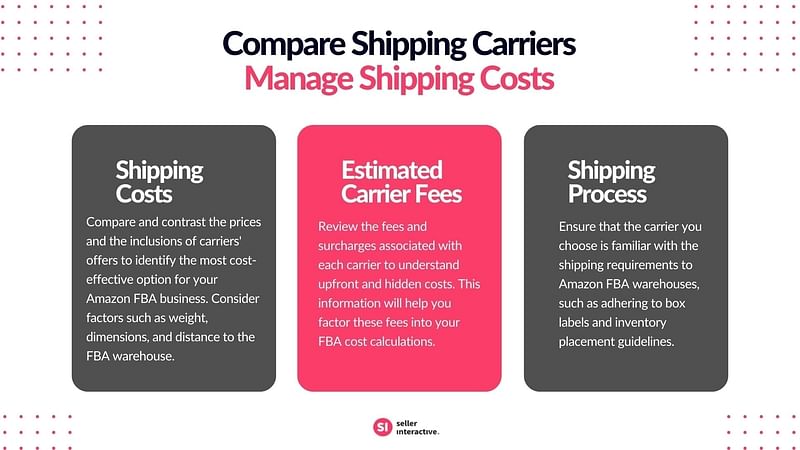Discover the insider secrets to maximizing profits and minimizing expenses when dealing with Amazon FBA fees. Don’t miss out!
Table of Contents
- Introduction to Amazon FBA
- Understanding Amazon FBA Fees
- Benefits of Using Amazon FBA
- Estimating Your Expenses
- Budgeting for FBA Fees
- Reducing FBA Costs
- Common FBA Fee Mistakes to Avoid
- Staying Updated on Fee Changes
- Assessing the Value of Amazon FBA for Your Business
- Success Stories
- Conclusion: Maximizing Profits with FBA
- FAQs
Introduction to Amazon FBA
Have you ever wondered how sellers on Amazon manage to store, pack, and ship their products so efficiently? Well, they might be using a service called Amazon FBA. But what exactly is Amazon FBA, and why is it so important for sellers like you? Let’s dive in and explore the world of Amazon FBA.
Amazon FBA stands for Fulfillment by Amazon. This service allows sellers to store their products in Amazon’s fulfillment centers. When a customer places an order, Amazon takes care of the packing, shipping, and customer service on behalf of the seller. In simple terms, Amazon FBA helps sellers focus on growing their business while Amazon handles the logistics.
So, why is Amazon FBA crucial for sellers? Imagine not having to worry about storing inventory in your garage or making trips to the post office every time you make a sale. With Amazon FBA, sellers can reach a wider audience, offer faster shipping options, and provide top-notch customer service without the hassle of handling everything on their own.
Understanding Amazon FBA Fees
When you sell products on Amazon using FBA, you need to be aware of the different fees that Amazon charges for their services. These fees include fulfillment fees, storage fees, and long-term storage fees. Fulfillment fees are the costs associated with picking, packing, and shipping your products to customers. Storage fees are charges for storing your inventory in Amazon’s warehouses, and long-term storage fees apply if your products have been sitting in the warehouse for an extended period.
How Fees Are Calculated
Amazon calculates FBA fees based on various factors, such as the size and weight of your products. Larger and heavier items generally incur higher fees due to the additional resources required for handling and shipping. It’s essential to consider these factors when setting prices for your products to ensure you make a profit after covering all the necessary fees.
Benefits of Using Amazon FBA
When it comes to selling products online, Amazon FBA offers numerous advantages for sellers. Here are some of the key benefits that FBA provides:

Image courtesy of www.sellerapp.com via Google Images
Storage Convenience
One of the major benefits of using Amazon FBA is the storage convenience it offers. Instead of worrying about storing inventory in your own space, Amazon warehouses take care of it for you. This means you can focus on other aspects of your business without the hassle of managing physical inventory.
Efficient Shipping
With Amazon FBA, sellers can take advantage of Amazon’s vast shipping network. This means quicker and more efficient shipping for your customers, leading to higher customer satisfaction and potentially more sales. Amazon handles the shipping process, including packaging and delivery, leaving you with more time to focus on growing your business.
Customer Service Support
Another benefit of using Amazon FBA is the customer service support that comes with it. Amazon’s customer service team is available to assist your customers with any inquiries or issues they may have regarding their orders. This level of customer support can help build trust and loyalty with your customers, ultimately leading to repeat business.
Overall, Amazon FBA provides sellers with a convenient and efficient way to sell products online, with the added bonus of storage, shipping, and customer service support. It is a valuable tool that can help streamline your business operations and grow your online sales.
Estimating Your Expenses
When it comes to selling products on Amazon FBA, it’s crucial to have a good understanding of the fees involved. Luckily, Amazon provides sellers with handy tools like the Amazon FBA fee calculator to help estimate expenses accurately. Here’s a step-by-step guide on how to make the most of these calculators:
1. Navigate to the Amazon Seller Central website and log in to your account.
2. Locate the “Fulfillment by Amazon” section and click on “Calculate Your FBA Fees.”
3. Enter details about your product, such as its size, weight, and selling price.
4. The FBA fee calculator will then provide you with an estimate of the various fees you can expect to pay, including fulfillment and storage fees.
5. Take note of these estimated costs to better plan your budget and pricing strategy for your products.
By using Amazon’s FBA calculators, you can gain insight into the expenses you’ll incur as an FBA seller, helping you make informed decisions about your selling strategy.
Budgeting for FBA Fees
When selling on Amazon using Fulfilled by Amazon (FBA) services, it’s crucial to budget effectively for the various fees associated with this service. By understanding and planning for these costs, you can ensure that your business remains profitable. Here are some tips to help you budget for FBA fees.

Image courtesy of hedgescompany.com via Google Images
Types of FBA Fees
Amazon charges sellers different types of fees for using their FBA services. These include fulfillment fees, storage fees, and long-term storage fees. Fulfillment fees cover the costs of picking, packing, and shipping your products to customers. Storage fees are charged for storing your inventory in Amazon’s warehouses, while long-term storage fees apply to items that have been stored for an extended period.
How Fees Are Calculated
The calculation of FBA fees is influenced by various factors, such as the size and weight of your products. Larger and heavier items typically incur higher fees. Additionally, the duration your products are stored in Amazon’s warehouses can also impact the total fees you pay. By understanding how these factors affect fees, you can estimate your expenses more accurately.
Reducing FBA Costs
As a seller on Amazon FBA, it’s essential to find ways to minimize your costs to maximize your profits. Here are some strategies you can use to reduce your FBA fees:
Optimizing Product Size
One effective way to cut down on FBA fees is by optimizing the size of your products. Amazon charges fees based on the dimensions of your items, so try to minimize packaging to reduce these costs.
Managing Inventory Efficiently
Another way to reduce FBA fees is by managing your inventory efficiently. Avoid storing excess products in Amazon’s warehouses for extended periods, as this can lead to additional long-term storage fees. Keep track of your inventory levels and adjust your restocking strategies accordingly.
Common FBA Fee Mistakes to Avoid
One common mistake that sellers make is forgetting about long-term storage fees. These fees can add up quickly if you have products sitting in Amazon’s warehouses for an extended period. It’s essential to keep track of your inventory levels and make sure to remove any slow-moving items to avoid these additional costs.

Image courtesy of hedgescompany.com via Google Images
Ignoring Product Dimensions and Weight
Another mistake to avoid is neglecting to consider the size and weight of your products when calculating FBA fees. Amazon charges higher fees for larger and heavier items, so it’s crucial to accurately input this information into the FBA fee calculator to get an accurate estimate of your expenses.
Not Optimizing Packaging
Sellers often overlook the importance of optimizing their packaging to reduce FBA fees. Bulky or inefficient packaging can increase shipping costs and storage fees. By using compact and lightweight packaging, you can lower your overall expenses and improve your profit margins.
Ignoring Fee Updates
It’s essential to stay informed about any changes to Amazon’s fee structure. Ignoring fee updates can lead to unexpected costs and impact your bottom line. Make sure to regularly check for any updates or announcements from Amazon regarding FBA fees to avoid any surprises.
In conclusion, by being mindful of these common FBA fee mistakes and taking proactive steps to avoid them, sellers can effectively manage their expenses and optimize their profits when using Amazon FBA.
Staying Updated on Fee Changes
It is crucial for Amazon FBA sellers to stay informed about any changes to fee structures. Keeping abreast of updates can help you plan your budget effectively and avoid any surprises when it comes to expenses. Here are some tips on how you can stay updated on fee changes:
Regularly Check Amazon Seller Central
Amazon Seller Central is the hub for all information related to your seller account. Make it a habit to check this platform regularly for any notifications or announcements regarding fee changes. Amazon often alerts sellers to updates through Seller Central, so staying active on this platform is essential.
Subscribe to Amazon Seller Forums
Joining Amazon Seller Forums is another great way to stay updated on fee changes. These forums are a space for sellers to connect, share insights, and discuss updates within the Amazon FBA community. By subscribing to these forums, you can stay informed about any fee adjustments and learn from the experiences of other sellers.
Follow Amazon’s Official Channels
Amazon typically announces fee changes through their official channels, such as their blog or social media accounts. By following Amazon on platforms like Twitter or LinkedIn, you can receive real-time updates on any modifications to fee structures. This direct source of information can help you adjust your strategies accordingly.
| Fee Type | Description | Tips for Managing |
|---|---|---|
| Fulfillment Fees | These fees cover the cost of picking, packing, shipping, and customer service. | Optimize your product packaging to reduce size and weight, thus lowering fulfillment fees. |
| Referral Fees | Percentage of the total sales price that Amazon charges for each transaction. | Research and compare referral fees across different product categories to maximize profits. |
| Long-Term Storage Fees | Fees incurred for inventory stored in Amazon fulfillment centers for an extended period. | Regularly review your inventory levels and sales velocity to avoid excess storage fees. |
| Storage Fees | Fees associated with storing products in Amazon fulfillment centers. | Utilize Amazon’s Inventory Performance Dashboard to monitor and optimize your inventory levels. |
By actively monitoring these channels and platforms, you can ensure that you are always up to date on any fee changes within the Amazon FBA system. This proactive approach will enable you to make informed decisions about your business and maintain profitability in the long run.
Assessing the Value of Amazon FBA for Your Business
Considering whether Amazon FBA is the right choice for your business is a crucial decision. Let’s dive into how you can assess the value of Amazon FBA for your specific needs.

Image courtesy of www.linkedin.com via Google Images
Understanding Your Business Needs
First and foremost, it’s essential to understand what your business requires. Are you looking to expand your reach and customer base? Do you need help with storage and shipping logistics? Assessing your business goals will help you determine if Amazon FBA aligns with your objectives.
Evaluating Cost-Effectiveness
Next, consider the cost implications of utilizing Amazon FBA services. Compare the fees associated with FBA, such as fulfillment and storage costs, against the potential benefits like improved efficiency and customer satisfaction. Determine if the monetary investment is justified by the value FBA brings to your business.
Analyzing Scalability
One significant advantage of Amazon FBA is its scalability. Assess whether your business has the potential to grow rapidly with the support of FBA services. Consider factors like inventory management, order fulfillment, and customer service capabilities to gauge if Amazon FBA can accommodate your business’s expansion.
Factoring in Customer Experience
Customer experience plays a vital role in the success of any business. Evaluate how Amazon FBA can enhance the shopping experience for your customers. With FBA’s reliable shipping and customer service, you can potentially elevate customer satisfaction levels and build loyalty within your target audience.
Success Stories
Let’s take a look at some inspiring stories of successful Amazon FBA sellers who have effectively managed their fees to maximize their profits.
From Side Hustle to Full-Time Business
Meet Sarah, a stay-at-home mom who started selling handmade jewelry on Amazon FBA as a side hustle. With dedication and strategic planning, Sarah was able to optimize her product sizes to reduce fulfillment fees and increase her storage efficiency. As a result, she saw a significant increase in sales, allowing her to turn her side hustle into a full-time thriving business.
Scaling Up with Strategic Inventory Management
John, a tech-savvy entrepreneur, decided to expand his e-commerce business using Amazon FBA. By leveraging the FBA tools available and closely monitoring his inventory levels, John was able to avoid long-term storage fees and reduce his overall fulfillment costs. This smart approach enabled John to scale up his business rapidly while keeping his expenses in check.
International Success with Amazon FBA
Lucy, a small business owner, dreamt of taking her products to a global market. Through Amazon FBA’s worldwide distribution network, Lucy was able to reach customers in different countries without the hassle of managing international logistics. By utilizing Amazon FBA’s cost-effective shipping options, Lucy unlocked new revenue streams and achieved international success beyond her expectations.
Conclusion: Maximizing Profits with FBA
Throughout this article, we have explored the ins and outs of Amazon FBA and how sellers can navigate the various fees associated with this service to maximize their profits. By understanding the types of fees, how they are calculated, and the benefits of using Amazon FBA, sellers can make informed decisions to optimize their operations.

Image courtesy of sellerinteractive.com via Google Images
Estimating expenses is crucial for budgeting effectively, and tools like the Amazon FBA calculators can help sellers predict their fees accurately. By following some budgeting tips and implementing strategies to reduce costs, sellers can ensure that their Amazon FBA fees do not eat into their profits excessively.
Avoiding common fee mistakes and staying updated on any changes to fee structures are also essential to managing FBA costs effectively. By analyzing the value of Amazon FBA for their specific business needs and learning from success stories of other sellers, businesses can determine if this service is the right choice for them.
It is clear that effective fee management is key to maximizing profits with Amazon FBA. By staying informed, utilizing resources available, and implementing sound financial practices, sellers can harness the full potential of this service to grow their business and achieve success in the ever-competitive world of e-commerce.
FAQs
What is Amazon FBA?
Amazon FBA stands for Fulfillment by Amazon. It is a service offered by Amazon that helps sellers store their products in Amazon’s fulfillment centers. Amazon then picks, packs, ships, and provides customer service for these products. This service helps sellers reach a wider customer base and streamline their operations.
How are Amazon FBA fees calculated?
Amazon FBA fees are calculated based on various factors like the size and weight of the product, the time it is stored in Amazon’s warehouses, and the type of service the seller chooses. The fees cover storage, picking, packing, shipping, and customer service.
What are the types of Amazon FBA fees?
There are different types of fees associated with Amazon FBA. These include fulfillment fees, storage fees, and long-term storage fees. Fulfillment fees are charged for picking, packing, and shipping orders, while storage fees are for storing products in Amazon’s warehouses.
How can I estimate my expenses using the Amazon FBA fee calculator?
To estimate your expenses using the Amazon FBA fee calculator, you need to input details such as product size, weight, type, and other relevant information. The calculator will then provide an estimate of the fees you can expect to pay for using Amazon FBA services.
How can I reduce my Amazon FBA costs?
To reduce your Amazon FBA costs, you can consider optimizing your product size and weight to minimize fulfillment fees. You can also manage your inventory effectively to avoid long-term storage fees. Additionally, staying on top of your expenses and making strategic decisions can help lower your overall costs.
What are common Amazon FBA fee mistakes to avoid?
Common mistakes sellers make with Amazon FBA fees include underestimating shipping costs, neglecting to calculate storage fees accurately, and failing to optimize product size for cost savings. By being aware of these pitfalls and planning ahead, sellers can avoid unnecessary expenses.
How can I stay updated on changes to Amazon FBA fees?
To stay informed about changes to Amazon FBA fees, sellers can regularly check Amazon’s Seller Central platform for notifications and updates. It is important to be aware of any fee adjustments to ensure accurate budgeting and pricing strategies.
Is Amazon FBA the right choice for my business?
Whether Amazon FBA is the right choice for your business depends on various factors like your products, sales volume, and logistical needs. Sellers should assess their individual requirements and compare the costs and benefits of using Amazon FBA against other fulfillment options to make an informed decision.
